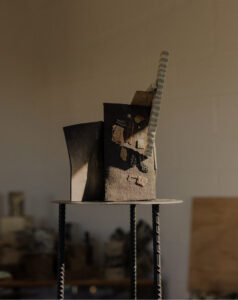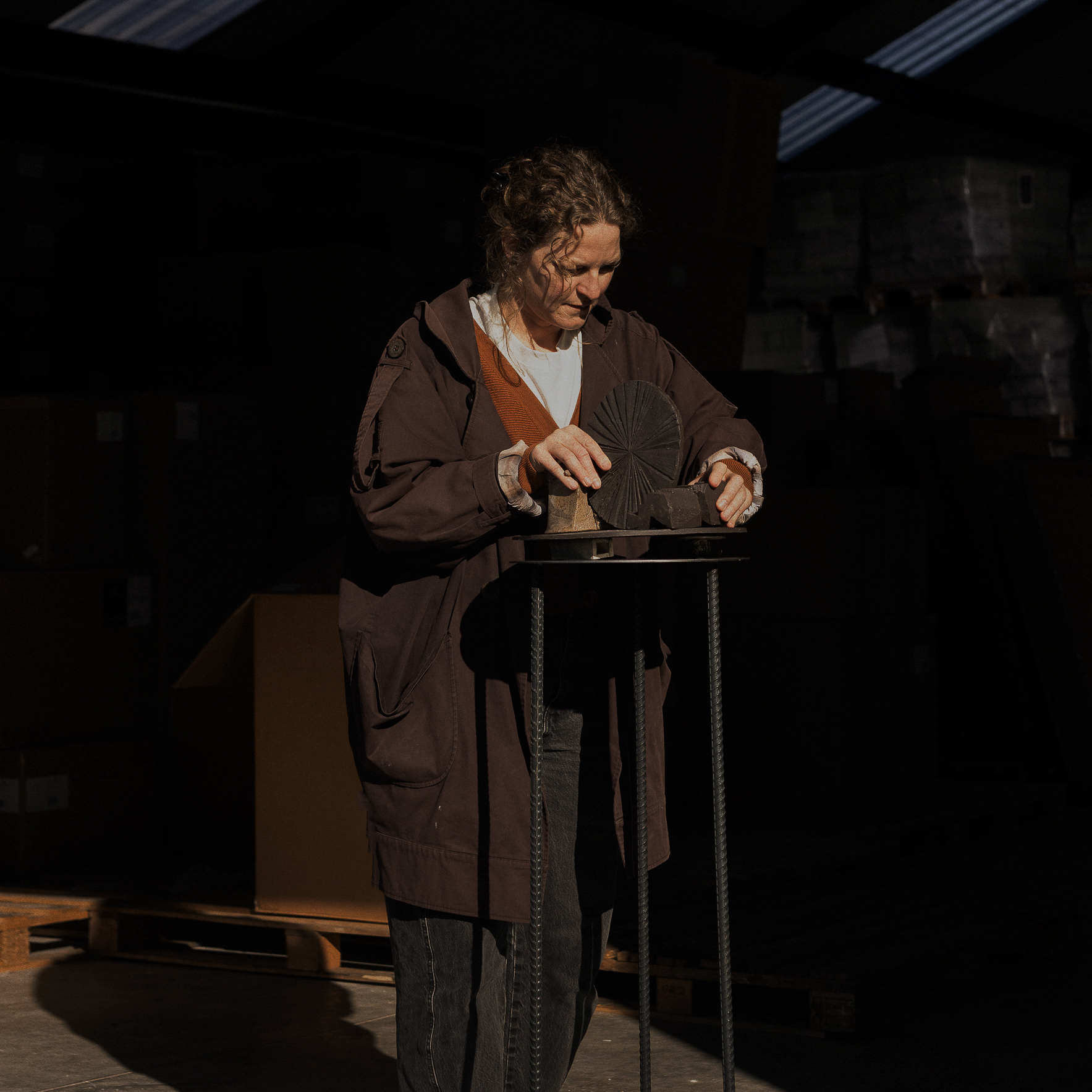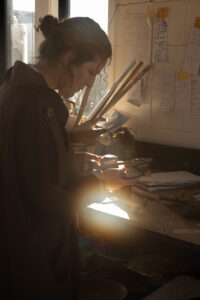We spoke with artist Lucy McMillan, about her current exhibition ‘Folded Air’ with Artor Contemporary. Read on to discover more about Lucy’s creative journey.
____________________
1. What first drew you to ceramics and sculptural forms, and how has your practice evolved since then?
I’ve always been interested in how objects and paintings are built — how things fit together, how they hold weight and balance. I have a bricolage approach to making and clay offers a kind of stretchy, adaptable language that allows for experimentation. My clay wall works and sculptures draw from a lineage of applied artists and designers who value gesture, presence, and the physicality of making. My practices touchstones are weighty Formalism and Expressionism. I also draw from the spatial design of Constructivism and Bauhaus and the play between applied and fine art. I have come to understand that cross-pollination of processes is where my work sits. Whether it’s producing architectural tiles or building one-off sculptural pieces it keeps my practice evolving.
2. There’s a strong sense of history and material memory in your work, with references to artefacts and prehistory. How do these connections to the past influence the stories you want to tell through your pieces?
Fired clay is inherently historical, it’s a material that holds time. When I pull a piece from the kiln, it can sometimes feel like they’ve been here for a while or have been dug out of an archaeological ruin. Clay’s density, its weight, and its transformation through fire give it a kind of mystery. The forms I create often feel like ambiguous ritual artefacts — undated and unfamiliar — and that’s close to where I want the work to sit: not from a specific era, but loaded with non-meaning and carrying the suggestion of many.
I look back to a wide canon of industrial designers, artisans, and applied artists — from 17th-century Chinese makers who developed agateware and celadon glazes, to fragments of ornament and furniture design. I spent ten years living in Berlin, and the memory of Wunderkammer collections and the bas-reliefs of East Berlin building facades stay with me. The presence of the past is everywhere.

Photograph by Alex McVinnie
3. Your work often explores the form of negative space. How do you approach this concept, and what does it add to the narrative of your pieces?
Negative space is one of the compositional tools I use to create ambiguity, imbalance, or pause — to hold one part of a piece in relation to another. Sometimes it’s structural; sometimes it’s just a gap that makes everything around it feel more precarious. I treat each piece as a spatial drawing, and negative space helps to give the work its rhythm. It allows edges and joins to stay exposed, keeping the act of making visible.
4. How do you imagine yourself, your practice, to look in 10 years time?
I hope my practice is still grounded in curiosity. I currently manufacture handbuilt agateware tiles in my studio and am working on projects across the US, Australia, and New Zealand. I’m looking for a work rhythm where design, making, and sculpture can coexist without pulling too far in any one direction. I work best in solitude but I’m beginning to reach a point where I need assistance some times in my studio and I imagine the next few years will involve feeling my way through what that looks like.

